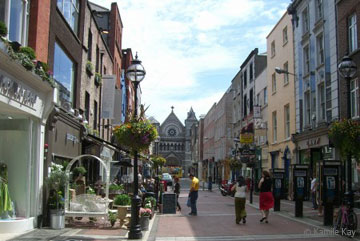$ Angelic crowdsourcing $

The last two entries covered crowdsourcing 101. Are you ready for crowdsourcing 201? This is for when you’re ready to invest $ collectively as a future community of tenants to develop a common product, such as that affordable, green-built, downtown loft building with roof deck and indie ground-floor coffeehouse and restaurant – or even better, a whole block of them (pictured).
The term used to describe this team development methodology is angelic crowdsourcing* (combining angel investing with crowdsourcing), with precedents in producing an album, specialty foods, a movie and even an eco-village on a remote island.
Based on their experience, the crowdsourced movie’s producers took the time to lay out some angelic crowdsourcing guidelines**, which are here applied to cooltowns:
Increase the barriers to entry
Involve only those who are actually considering buying/renting/leasing in the building/community – the beta community.
Elevate the level of debate
Keep discussion at a high level by focusing on the beta community. Provide inspiring examples/photos of places that raise their expectations.
Gather diverse people for a balanced [community]
Monitor and balance the growth of the community to ensure there is a diversity of people, if for no other reason than diversity is one of the most appealing characteristics sought by the creative class.
Target existing online communities and interests
Tap into creative, entrepreneurial, downtown-oriented groups who already have this kind of development on their objectives list.
Don’t overpromote or overbuild
Once the beta community is established, there is little need to promote the development – “you are overpromoting a project that isn’t tangible enough for larger audiences. Targeted promotion to those who already share common values with the project is more effective and appropriate.”
*Definition courtesy of Springwise, one of the coolest trend websites around.
**The term ‘gated community’ in the UK is used in the virtual sense, unlike the negativity (and ubiquity) associated with those in the U.S.’s physical world

Leave a Reply